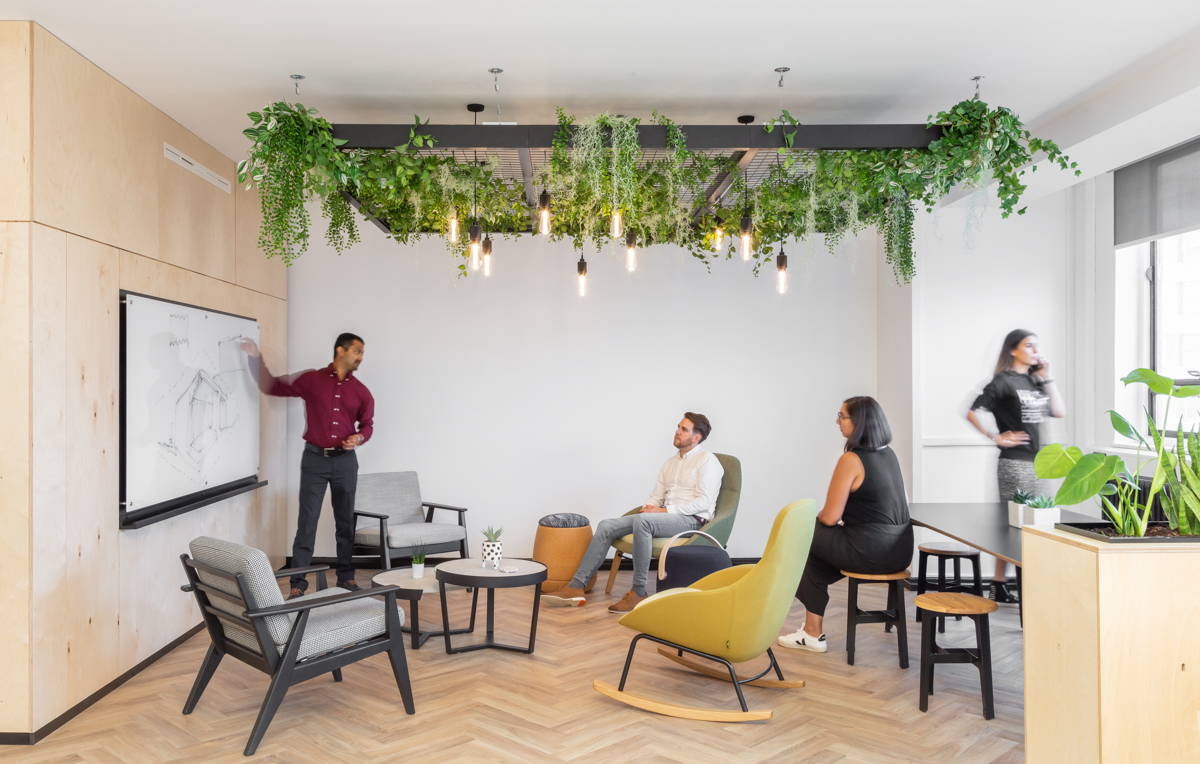Insight
Emerging trends in a modern workplace
22 Feb 2022
The pandemic has meant that businesses have needed to adapt their workspaces to suit the needs of their people. With the move towards hybrid working, offices will need to ensure that their environments focus on comfort and style, talent retention, employee wellbeing and sustainability.
Flexibility
The layout of the environment is becoming much more important for employees. Integrating meeting spaces, breakout areas and social spaces can promote collaboration and knowledge sharing. This is something we integrated into the refurbishment of Halford House where we introduced new breakout spaces and a large open tea point area, which means that spontaneous collaboration can occur, encouraging social integration and productivity.
Providing quiet areas for concentrated work and meetings has also become a key requirement for offices. With the increase in the number of virtual meetings, materials will play a key role in minimising sound, such as acoustic partitions.

Wellbeing
Another trend that we have seen recently has been the focus on wellbeing within the design of workplaces. Looking after our physical and mental health is paramount and businesses are ensuring that their environments integrate more wellbeing focused design.
The use of biophilic design, natural light and clean air have become increasingly important. During the Halford House project greenery and plants were specifically selected to increase physical health, wellbeing, and reduce stress. By integrating living walls, planter storage units and natural materials, offices can build a connection with nature.

Sustainability
Last year, COP26 acted as a catalyst to ensure that every business was contributing to the reduction of carbon emissions. This is something that should be at the heart of decisions around the design of an office and should be considered from the start. Integrating environmental and sustainable elements ensures that the building works more efficiently. For example, incorporating daylight controls reduces energy costs through an automatic lighting strategy.
Summary
The design of workspaces is more important than ever. The pandemic has ultimately changed how offices are designed. This year there will be an emphasis on comfort and the flexibility to choose how we work, as users we need much more from these environments. It will be interesting to see how these trends develop throughout 2022.